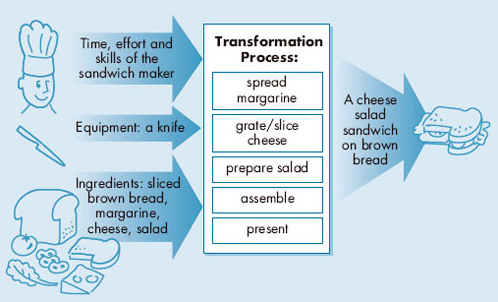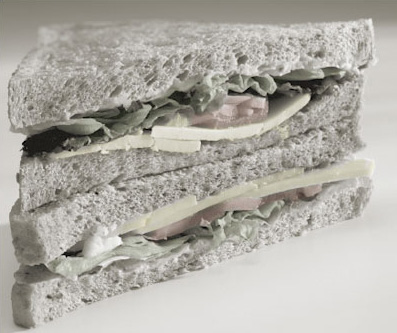2 Parts of a process: managing resources efficiently and effectively
2.1 The process approach
The ‘process’ approach is crucial to our understanding of task management in modern organisations. One of the simplest ways of explaining the process approach is through the diagram known as the transformation model (or the input/output diagram). The basic transformation model is provided in Figure 2.

Any job or task can be analysed (or broken down into smaller parts) using the process approach, by first identifying its inputs and its final outputs, and then by examining the activities that cause the transformation from one to the other. These activities are known as sub-processes. Analysis in this way helps us to understand how we might improve the performance of the task in some way. Let us use the simple example of preparing a sandwich to illustrate analysis. Using the process approach we can analyse the job as having the inputs, sub-processes and outputs seen in Figure 3.

In Figure 3, you can clearly see the main inputs of food ingredients, equipment (a knife), and human effort and expertise. These feed into the transformation process of making the sandwich which produces the desired output of … a cheese salad sandwich on brown bread (Figure 4)!

We could go further with our analysis and examine the sub-processes involved in the transformation in more detail. For example, as you can see the making of the sandwich requires: the spreading of margarine, the slicing or grating of the cheese, the preparation of the salad, the assembly and slicing of the sandwich, and the presentation of the sandwich to the eater. Each of these activities we have analysed can be broken down even further into its component parts involving transporting of the food products around the kitchen, movement of the knife in buttering and slicing, and so on.
